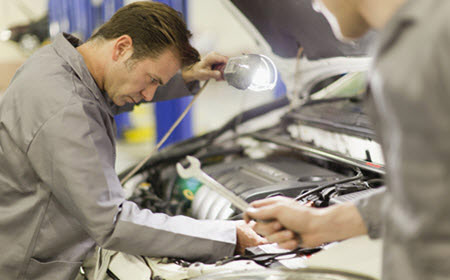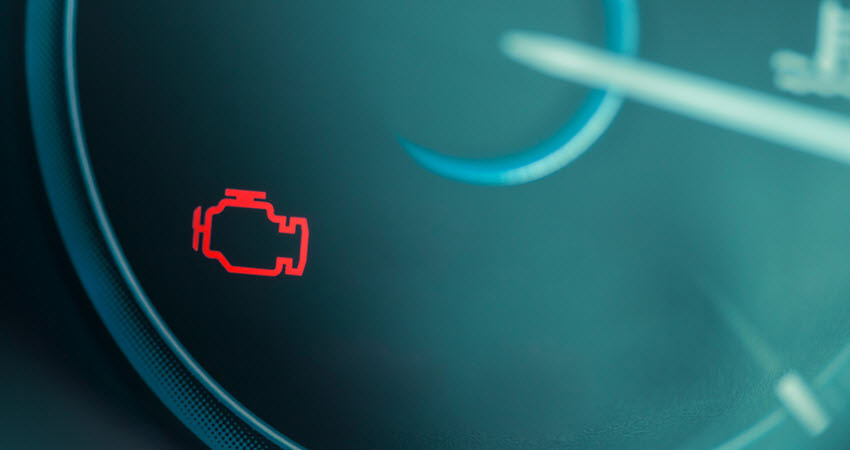Hondas are innovative and reliable vehicles that rarely malfunction. When your Honda does encounter a problem, you’ll want to fix it right away to maintain your vehicle’s health. That’s where the check engine light comes in.
Your Honda’s check engine light is controlled by its onboard computer, which continuously monitors the engine for trouble and illuminates the light when it identifies anything out of the ordinary. Unfortunately, “anything out of the ordinary” can range from a loose gas cap to a broken catalytic converter, which sometimes makes it difficult to know why your vehicle’s check engine light is on.
To help you with this, below are some tips for understanding why your Honda’s check engine light is illuminated.
Most Common Causes of Check Engine Light Illumination
When trying to determine why your Honda’s check engine light is on, it helps to have a list of the potential problems that might make the light illuminate.
One of the most common causes of check engine light illumination is a loose or broken gas cap. The gas cap both maintains adequate pressure in the fuel system and prevents your vehicle from losing fuel to evaporation, which means that it is incredibly important. Accordingly, your vehicle’s computer is incredibly sensitive to any gas cap malfunctions and will illuminate the check engine light immediately if it detects any problems with the part.
Another reason that your Honda’s check engine light may be on is that the vehicle’s wiring system is malfunctioning. For example, the spark plugs may be corroded or the battery may be low or dead. These problems can cause serious damage to your vehicle if left untreated, and may even cause the vehicle to stop working entirely.
A third common cause of check engine light illumination is oxygen sensor failure. Your Honda’s oxygen sensors are responsible for regulating the amount of oxygen in its exhaust system. These sensors are exposed to a great deal of wear and tear over time. If they fail, they can greatly reduce your vehicle’s fuel economy.
A final problem that may cause your vehicle’s check engine light to illuminate is a failure of the catalytic converter. The catalytic converter’s job is to convert your vehicle’s carbon monoxide emissions into carbon dioxide, which simultaneously improves vehicle performance and protects the environment. Because this part is so important, it is heavily monitored by your vehicle’s computer, which means that any problems with it will almost always cause check engine light illumination.
Identifying the Problem
Clearly, an illuminated check engine light can result from a diverse range of issues. As such, determining the exact cause of an illuminated check engine light can be challenging, but there are a few rules of thumb that can be used to help identify the problem.
First of all, take note of whether the light is flashing or remaining consistently illuminated. If it is holding steady, then the problem is less severe, and you can safely drive for a while longer before having your vehicle checked. If the light is flashing, however, then you should not drive. Instead, have a highly-trained mechanic examine your vehicle immediately, as something is seriously wrong with it.
If the light is holding steady and you would like to identify the cause of its illumination without visiting a mechanic, you have two options.
First, you can adjust your vehicle’s gas cap and see if that fixes the problem. If this does not cause the check engine light to turn off right away, fear not. It can sometimes take a few days for the computer to reset. However, if the light is still illuminated a couple of days after you have adjusted the gas cap, then the problem lies not with the cap, but with another part of the engine.
If this occurs, or if you’re already certain that the gas cap is not the issue and would like to identify the problem yourself, then you could purchase an OBD-II reader. This tool, which pulls codes from your vehicle’s check engine light to determine why it’s on, retails for an average of $20 and is available at most auto part stores.
How We Can Help

Of course, knowing why your Honda’s check engine light is on is only half the battle. The other half is fixing the problem. For that, you’ll need a skilled mechanic.
Our team at Professional Automotive has experience diagnosing check engine light problems in Hondas. Since 1994, we have provided honest and knowledgeable service to customers in the Marlborough, MA area and surrounding communities. We’d love to help you keep your vehicle running smoothly. Give us a call or stop by today to experience The Professional Difference.
 Mon - Fri: 7:30 am - 5:30 pm
Mon - Fri: 7:30 am - 5:30 pm 19 Mechanic St,
19 Mechanic St, (508) 485-8633
(508) 485-8633
